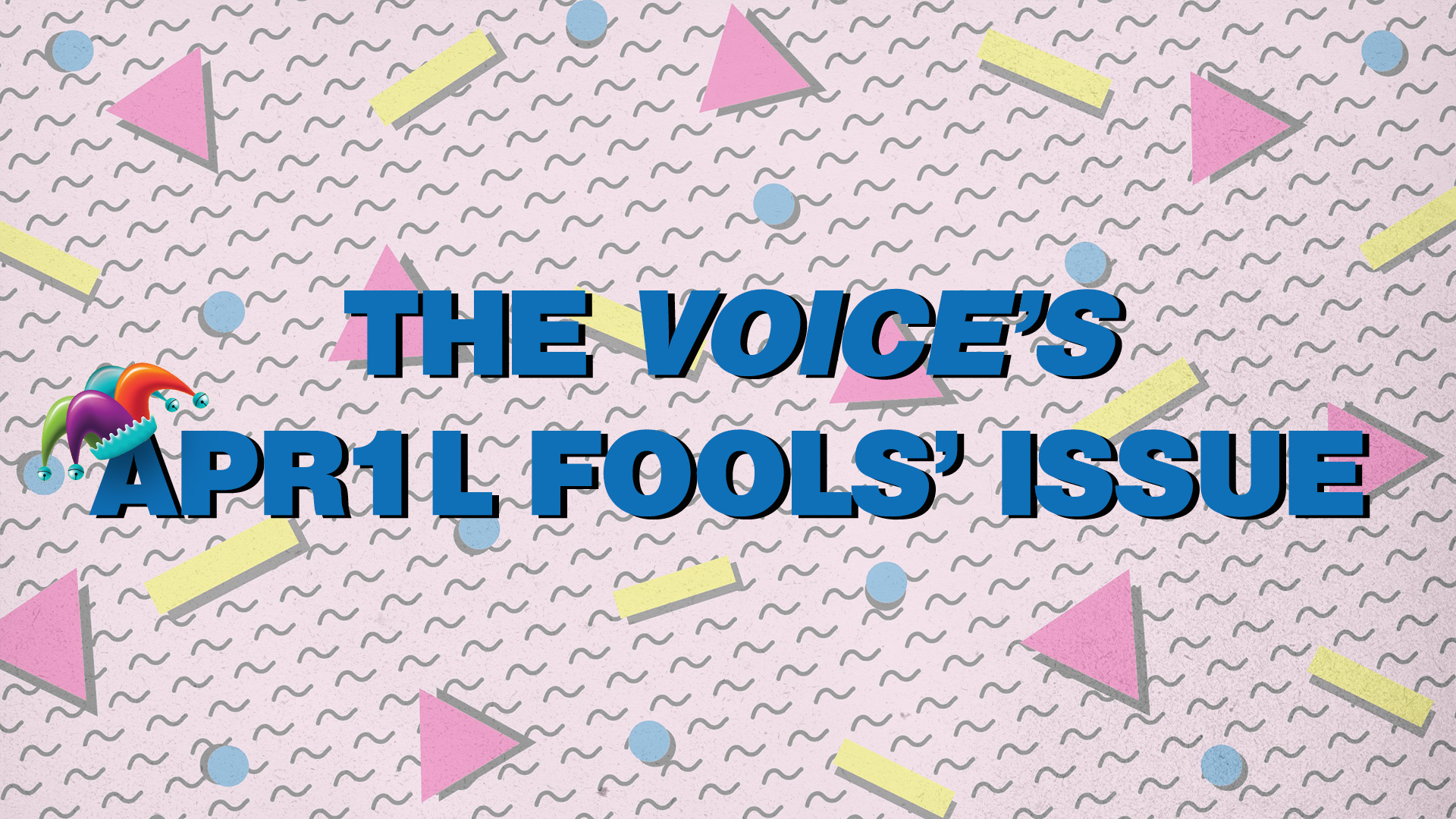I’ve never seen Red Square. As a sophomore who spent my freshman year online, I’ve only known it as a walkway thanks to the hideous white tent that’s occupied its center since I arrived on campus. The eyesores across campus that we generously call “tents” don’t serve any aesthetic purpose that Lau doesn’t already fulfill; in fact, they don’t serve any purpose at all. Instead, they exemplify everything wrong with Georgetown’s approaches to COVID-19, student life, and mental health.
Just like we can choose between eggs, eggs, and eggs for breakfast at Leo’s, students looking for outdoor spaces beyond Healy Lawn, Copley Lawn, and the observatory have a diverse selection of nine nearly identical white tents. Swallowing up the campus’s quads and plazas, the cavernous tents host vacant seats and tables in places like the Southwest Quad volleyball courts, Harbin patio, and the entrance to White-Gravenor. Even calling them “outdoor spaces” is a stretch—while most of the tents have open flaps or doors, they’re almost fully enclosed. And labeling the tents “outdoor spaces” is an insult to the picturesque spaces that they’ve supplanted. Understandably, students tend to avoid these grimy, sterile monstrosities. They’re partly transparent and transparently unnecessary. There are far better spaces both indoors and outdoors, so why do we even have the tents?
I won’t attempt to explain the inexplicable; the university itself has offered little justification for the tents. Scour Georgetown’s website and you (understandably) won’t find a single picture featuring the tents. In fact, there’s sparse mention of them at all save for the reservation page on the Event Management Services site—an absence that should extend to the campus itself.
The current crop of tents has been up since at least June 2021, while the one in Dahlgren Quad has been in place since last May. Though the university has never bothered to clarify their purpose, one can presume that their presence has something to do with the pandemic. And they’re tragically pervasive—tents now occupy Red Square, Dahlgren Quad, Leavey Esplanade, and more. Even if we truly needed the tents for music classes where students had to go maskless, one or two would have sufficed. There’s simply no reason to have ten largely unused tents taking up open spaces across campus, yet the tents have become a fact of campus life that students resentfully, begrudgingly accept.
Somehow, the tents became a comical element of the university’s haphazard COVID-19 policies. Provost Groves’s January 24 email explained that “residential students should eat their meals in their private residence or outside in the tents on campus.”. But eating “outside” in the enclosed tents directly contradicted the rationale for making Leo’s grab-and-go, so the administration either encouraged students to live dangerously or its policies were baseless from conception. Even if one accepts the dubious logic that eating in the tents was safer than eating in Leo’s, common rooms (also prohibited!) tend to have lower capacity than both. The eating policy had as much rationale behind it as the tents themselves—none.
And now that the university has dropped its indoor mask mandates, no conceivable rationale for the tents remains. They’re no longer needed for classes, if they ever were; now that students can go mask-free indoors, meeting maskless doesn’t require a separate, technically “outdoor” space. With the weather warming up, they certainly aren’t needed as a shelter from the cold and snow. The tents’ existence makes progressively less sense, an impressive feat since they’ve always been unnecessary.
It’s easy to mock the obvious policy contradictions, but they underscore far more serious issues with the university’s COVID management. At best, they indicate the prioritization of virtue signaling over reasoned, consistent action. At worst, they show utter indifference for student wellbeing—as if abysmal mental health resources, chronic HoyAlert delays, and Leo’s failing ten items on its health inspection (and somehow passing) weren’t enough to make that indifference clear.
And the tents weren’t the only contradiction in the university’s COVID-19 policies. Starting January 30, students could return to in-person classes—but indoor club activities were still prohibited for the next two weeks. I could attend classes with over 50 students while most smaller club meetings were off limits. That may not seem significant, but the first few weeks of a semester are a momentous time, especially for freshmen and even sophomores still finding their footing on campus. It’s when students decide what clubs they’ll join and what activities they’ll get involved in, a crucial element of social life at Georgetown. Online classes were an inconvenience, but stripping away the locus of social life for two additional weeks was an unnecessary and contradictory move. By depriving students of meaningful extracurricular engagement, the administration only worsened the often-difficult social climate on campus. And with in-person classes back in session, there’s no conceivable public health justification for that choice.
If oddly inconsistent COVID-19 policies exemplified by the tent saga were one front in the university’s war on student life, the tents themselves are a much more direct one. It’s quite odd to hear my professors extol the virtues of Red Square when no such square exists anymore. That’s not to say that Red Square is entirely empty; students still scrawl messages on the bricks and clubs still canvass in the limited space they have. At times that’s fine, but a little breathing room would be nice if you don’t want the Heckler to force you into a jousting match. Physical inconveniences aside, the tents in Red Square and elsewhere have deprived students of valued communal spaces.
Communal spaces are an essential part of student life, and the university’s decision to slash them is a damning revelation of its priorities. By replacing commonly used spaces like the Southwest Quad volleyball courts with seldom-used tents, Georgetown showed its willingness to stifle community for purely arbitrary reasons.
Unfortunately, those actions fly in the face of Georgetown’s campus culture. Class and club choices can be self-selecting, prompting students to interact primarily with those who share their interests. Though those narrow interests may forge lasting friendships, the university actively fails in its mission of cura personalis when it fails to cultivate a broader and more inclusive campus community. That’s why it’s so perplexing that a university which already struggles with exclusive club culture took a hatchet to outdoor communal spaces on campus. Apparently, Georgetown’s doubling down on exclusivity—but unlike the COVID policies, at least that’s consistent.
Ironically, Georgetown clearly understands the importance of outdoor spaces—the university advertises these spaces to prospective students. Yet many of its most iconic spaces are largely tented. A substantial segment of Leavey Esplanade is now tented off, leaving less space for student activity and studying. Its “wide, open layout” is almost fictional at this point, a relic of a tent-free past, and its supposed “absolute best view of campus” is now tarnished by a tent.
The tents are also a direct attack on student well-being that could worsen Georgetown’s ongoing mental health crises. Studies have consistently found that spending time outdoors can improve mental health and reduce depression and anxiety, an opportunity diminished by the tents. With fewer outdoor spaces, students have fewer reprieves from the stress of exams and papers. And mental health’s an especially pressing issue at Georgetown given a unique convergence of factors: the university’s failure to support its Counseling and Psychiatric Services (CAPS), the inherent challenges of college, and the lingering consequences of the pandemic.
By now, the litany of CAPS horror stories is familiar to pretty much every Georgetown student. CAPS went over a year without a full-time director, suffers from dangerously long wait times, and has a justifiably poor reputation among the student body. In a much-maligned Instagram post, it encouraged students to “STOP” to relieve stress: Stop what you are doing, Take a deep breath, Observe your internal experience and external surroundings, and Proceed with your day. It’s hard to tell whether that’s satire or outright mockery. And it’s especially rich for an organization known for monthslong waits to place the burden of care on the students whose tuition dollars fund it. CAPS’s failures are anything but hilarious; they actively endanger at-risk students.
Georgetown’s failures are inexcusable, and especially so when one considers the challenges college presents to mental health. Students learn to live away from home for the first time, navigate new social realities, cope with intense academic workloads, and find a career direction. Those are challenging priorities to juggle simultaneously, and they often translate into mental health issues. Around 73% of college students endure some form of mental health crisis, while almost a third report that their depression interferes with basic functions. The pervasiveness of mental health struggles means Georgetown should be prepared to assist students, making CAPS’s failures entirely inexcusable.
The challenges of college life have only been magnified by COVID-19 and its impacts. We all had to endure a draining year of online classes with minimal social connection amidst a deadly pandemic. And many students had it far worse than just that—dealing with untenable housing situations, supporting themselves and family members as essential workers, and coping with unimaginable loss. It’s unsurprising, then, that the pandemic coincided with substantially higher rates of both depression and anxiety for students. Given these challenges, replacing outdoor gathering spaces with tents is incredibly irresponsible. The tents can only hinder efforts to build community and prevent students from reaping the benefits of outdoor spaces.
Our year online was an incredibly difficult time, but the return to campus has presented its own challenges. Sophomores have struggled to fit in and make up for lost time, academic workloads are ramping up again after a relative reprieve last year, and the dearth of online options ensures that a COVID-19 diagnosis leaves students behind academically. Even as the pandemic grows increasingly endemic, we’re still grappling with its long-term impacts. As COVID-19’s shadow looms over us, Georgetown should be equipped to handle corresponding mental health challenges.
I don’t pretend that the tents pose anything close to the hazards of CAPS’s failures, but they’re a telling indictment of the university’s approach to mental health. Addressing a persistent challenge like mental health is no easy task; while the university has done itself no favors, there’s no simple answer to the issue. Yet even as the university gets the big things wrong, it refuses to get the little things right. Preserving outdoor communal spaces is one of the easiest steps the university could take to protect students’ mental health. A campus environment conducive to mental health isn’t an ask, it’s a basic expectation. Yes, the impacts may be rather limited – but that also shows just how easy this would be. Georgetown had to do nothing, and it couldn’t even do that.
It seems that the administration asked itself “Why not?” before it ever asked “Why?”. Well, there are plenty of answers to the former and none to the latter. The tents are hideous, unnecessary, and a hindrance to student life. They deny students meaningful access to some of the most beloved spaces on campus, as well as the shared experiences and spaces that are so vital to building community. And they signify gross ineptitude in the university’s management of COVID-19 and mental health challenges. If the administration wants to foster a healthy community on campus, there’s an easy place to start. President DeGioia, tear down these tents!






Totally agree!